- Administrator
- Albums and Singles

Beacon Sound presents a first-time collaboration between Thomas Meluch (aka Benoît Pioulard) and Sean Curtis Patrick, entitled Avocationals. Over the course of nine songs, the two use synthesizers, reel-to-reel tape machines, field recordings, guitar, and processed voice to conjure the ghosts of 20th century Great Lakes shipwrecks.
Wintery, yet humming throughout with a narcotic warmth, Avocationals offers the listener 41 minutes out of time, evoking not only a distant past but also something of what may lay ahead.
As the artists themselves write, "An avocational is an amateur diver who assists in rescue, investigation and salvage relating to watercraft disasters. Thousands of freighters and small ships sank during the mid-20th century golden age of shipping on the Great Lakes; this album is about nine of them."
More information can be found here.
Read More
- Administrator
- Albums and Singles

Carla dal Forno launches her own label, Kallista Records, with her first original single in over a year, "So Much Better."
The widespread success of her debut album You Know What It's Like (2016) and The Garden EP (2017) has seen dal Forno spearhead the latter years of the Blackest Ever Black vanguard. Now the London-based Australian artist turns her attention to releasing original work on her own label, Kallista Records.
This two-track 7-inch record begins a bold year for dal Forno, who takes her lone kosmische misanthropy onto fertile new ground. The a-side single, "So Much Better," sees dal Forno step out from the shadows of emotional ambiguity into the vulnerable territory of anecdotal song-writing. Lyrics that echo the irrational passions of love scorned, in truth reveal a self-assured artist confessing to resentment which propels her. Here is dal Forno chiding herself in the mirror while excoriating an old infatuate with a vocal timbre that sits among the giants: the lilting power of Alison Statton, the mystic shamanism of Una Baines and the post-punk cabaret of Vivien Goldman.
The sparse production on both sides springs from the soft-pedaled cassette of covers, Top of the Pops, which dal Forno self-released last year. Though the raw, dubbed-out vision takes a back seat on "So Much Better," overshadowed by dal Forno’s fork-tongued lyrics, it is heightened on "Fever Walk" with acoustic drum racks ricocheting off fizzing drones, pastoral synth textures and meandering melody in the way of Broadcast, Flying Lizards and Portishead. But the illusion of wide-open spaces belies an oppressive, hysteria-inducing humidity swelling from the studio vision of her past instrumentals like "Dragon's Breath" and "Italian Cinema." And with a nod to her old band, F ingers, dal Forno’s voice-as-instrument hacks like a machete through her endless jungle of anxiety.
This two track 7-inch, the object of a new existence, reflects dal Forno's life in London working at Low Company recordstore and her monthly radio show on NTS. All in with the history and tradition of British post-punk and independent music, she strides boldly into the abyss.
Out April 16, 2019 on Kallista.
Read More
- Administrator
- Albums and Singles
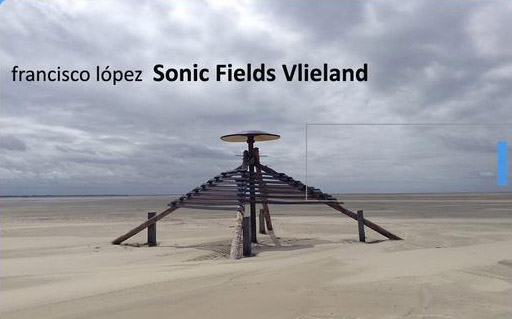 Taken together, these two recent releases from the always prolific Francisco López perfectly encapsulate not only the breadth of his work, but also the extreme duality of his approach. Sonic Fields Vlieland is a three hour, six segment piece made exclusively by treating field recordings captured on the Dutch island of Vlieland while Untitled #337 is a full-on technology-based work that utilizes software creation and the limitations of digital recording methodologies. Both works are very different in their sound and methods of composition, but both also showcase López’s exceptional artistry.
Taken together, these two recent releases from the always prolific Francisco López perfectly encapsulate not only the breadth of his work, but also the extreme duality of his approach. Sonic Fields Vlieland is a three hour, six segment piece made exclusively by treating field recordings captured on the Dutch island of Vlieland while Untitled #337 is a full-on technology-based work that utilizes software creation and the limitations of digital recording methodologies. Both works are very different in their sound and methods of composition, but both also showcase López’s exceptional artistry.
Nowhere Worldwide/Tsonami Records
Unlike his Epoché Collection of pure field recordings, Sonic Fields Vlieland is a hybrid of that style and his composed work.The material, all processed recordings from the island, is actually part of an installation of sorts on Vlieland.Visitors are encouraged to download a smartphone app that triggers the piece recorded on that section of the island via geolocation.While that tangible component is lost once the recordings are presented on a USB drive for listening anywhere, López’s work, as always, stands powerfully on its own merits.
"SFV1 (Forest Dip)" is the perfect amalgamation of composition and natural sounds.For the first half, rustling and birds are apparent sources, but his tweaking, layering, and what sounds like intentional clipping from his recording device come together into a mass of scraping sounds and echoing sputters.It does clearly have some dissonant qualities to it, but the sound itself never strays too far from its source.As the journey goes on, López’s processing becomes more pronounced and is less about the original material."SFV2 (Forest Hill)" and "SFV3 (Dune Crater)" largely feature the natural source material towards the forefront of the mix.The former features him processing distant birdsongs and eventually generating static-like noises, but the whole piece remains grounded by the sounds of nature.The latter also opens with chirping, the sounds of other wildlife and distant winds, but towards the end, treated and layered birds and sinister dissonant hums encroach into disorienting, disturbing territory.
For the second half, the recordings are less embedded in the natural elements they were sourced from, and instead begin to take on the character of López’s more traditionally composed works."SFV4 (Beach)" is a mass of crackling, filtered textures that have a more abstract, grinding quality to them than anything that could be expected from nature.At most there seems to be the recording of far off waves, but with the volume amplified to have an entirely different quality.The opening of "SFV5 (Polders)" sounds almost like the field recording of a bonfire, but reverberated and processed heavily.The piece transitions into a more ambient, spacious one, but soon upset by looped pseudo-rhythmic passages and louder textures.
The final segment, "SFV6 (West End)" clocks in at an hour alone, and is at least in its opening moments very spacious.Some resonating, distant sounds can be heard, into an almost bell-like tone.By the middle, it is an aggressive mix of white noise crashing and low end rumbling.The rhythmic throb becomes explosive here, and with the combination of that and the volume, it is a piece that edges into harsher noise territory.By the end it is back to extremely low frequencies and tiny, quiet fragments of field recording.
samples:
 
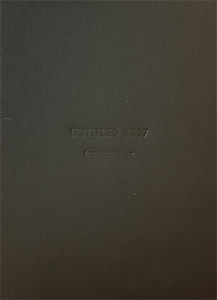 At the other end of the spectrum is Untitled #337.Compared to the nature-sourced, uncompressed data beauty of Sonic Fields Vlieland, this work is derived from completely synthetic sources.Namely, the piece generated using the "Low-resolution High Definition Lópezsonics" system (at 16kbps) focuses on those sonic artifacts that are created from such low sound resolution as the composition itself.Originally an 80 minute private edition, digital only piece, here it is expanded to an absurd nine hours and presented on a data CDr.Perhaps most astounding is, due to the low resolution of the source material, the four pieces combined total a whopping 67 megabytes in size (about the size of a normal length album in mp3 format).
At the other end of the spectrum is Untitled #337.Compared to the nature-sourced, uncompressed data beauty of Sonic Fields Vlieland, this work is derived from completely synthetic sources.Namely, the piece generated using the "Low-resolution High Definition Lópezsonics" system (at 16kbps) focuses on those sonic artifacts that are created from such low sound resolution as the composition itself.Originally an 80 minute private edition, digital only piece, here it is expanded to an absurd nine hours and presented on a data CDr.Perhaps most astounding is, due to the low resolution of the source material, the four pieces combined total a whopping 67 megabytes in size (about the size of a normal length album in mp3 format).
Of course, this makes for a rather unique listening experience.The first part is an extremely low volume piece that requires some significant volume to actually be apparent.López’s frequent advisory to only listen with good headphones or speakers is always a good rule to follow, but for this work it would sound like absolutely nothing at all due to the extreme frequencies.With decent playback, the fragments of sound take on a shimmering, somewhat melodic quality to them, as low frequency tones rumble away.This flows into the second part, which clocks in at five hours by itself.The dynamic is even more hushed here, but the subtlest, simmering tones can be heard throughout.
The third part is a bit more commanding in volume, and the content could best be described as resembling the compression artifacts from an mp3 file from the late 1990s (when the codecs were a bit less advanced) extracted from the music and placed at the forefront.What is interesting is that, how these sounds once irritated me in music I may have illegally acquired now make for a unique and fascinating listening experience in their own right.The final segment turns the volume down even lower, but sounds like a combination of arctic winds and misfiring electronics.
The contrast here is stark:one release presented in a luxurious, uncompressed digital format and constructed from exquisitely detailed field recordings, and the other a ridiculously low resolution format and developed from purely electronic sources.This dichotomy though is representative of Francisco López’s extremely varied body of work that just seems to continue diversifying.He is prolific, but whenever I hear a new composition from him, I never know what to expect.It may be so subtle that I have to listen in complete isolation and at absurd volume levels, or it can be as harsh as any noise recording in my collection.It is for these exact reasons that he has been a brilliant composer for so long that constantly evolves and hones his craft to near perfection.
samples:
 
Read More
- Administrator
- Albums and Singles
 It would be misleading to say that Cosey Fanni Tutti has been a singularly unprolific solo artist, as her oeuvre has never been constrained to simply music, but it is noteworthy that her last original solo album (Time to Tell) was released almost four decades ago. That album was stellar, setting quite a high bar for future releases. Also significant: Cosey's career has undergone a well-deserved renaissance in the last couple years, culminating in the release of her acclaimed memoir Art Sex Music. As a result, Tutti has the somewhat unenviable curse of being an album preceded by months of anticipation and high expectations. For better or worse, Cosey has nimbly sidestepped that situation to some degree, as Tutti is more of a soundtrack than a major new artistic statement…musically, anyway. On a conceptual level, this album is loosely intended as a career-spanning self-portrait built from reworked archival recordings. Cosey took that "reworking" part quite seriously though, so this album often feels like a warmly hallucinatory collection of instrumental Chris & Cosey remixes despite the submerged ghosts of more abrasive and transgressive days.
It would be misleading to say that Cosey Fanni Tutti has been a singularly unprolific solo artist, as her oeuvre has never been constrained to simply music, but it is noteworthy that her last original solo album (Time to Tell) was released almost four decades ago. That album was stellar, setting quite a high bar for future releases. Also significant: Cosey's career has undergone a well-deserved renaissance in the last couple years, culminating in the release of her acclaimed memoir Art Sex Music. As a result, Tutti has the somewhat unenviable curse of being an album preceded by months of anticipation and high expectations. For better or worse, Cosey has nimbly sidestepped that situation to some degree, as Tutti is more of a soundtrack than a major new artistic statement…musically, anyway. On a conceptual level, this album is loosely intended as a career-spanning self-portrait built from reworked archival recordings. Cosey took that "reworking" part quite seriously though, so this album often feels like a warmly hallucinatory collection of instrumental Chris & Cosey remixes despite the submerged ghosts of more abrasive and transgressive days.
The initial idea for this album originated as part of the 2017 COUM Transmissions retrospective in Cosey's hometown of Hull, as she was asked to create a new work for the event.She chose to make an autobiographical film that recounted her early life in the city through family photos and various visual ephemera from the era.She accompanied it, appropriately enough, with a live soundtrack assembled from various audio fragments of her life, visual/performance art, and music.Thankfully, that particular COUM Transmissions retrospective did not scandalize an entire nation or get Tutti rebranded as a wrecker of civilization.It did, however, result in this album, as Cosey later expanded upon the original performance in her studio.That said, if I did not know the album’s background, it is unlikely that I would ever deduce its inspirations and hidden depths, as it often feels more like a series of pulsing grooves than a poignant journey through evocative samples or a monument to a life's work.The title piece is an especially prominent example of that aesthetic, as it barrels along as a throbbing, motorik-sounding bit of propulsive synth pop, albeit one enlivened by a smoky cornet solo and skittering, shuddering flourishes of dub-style production.The rest of the album is a bit less straight-forward than that though, as it often feels more like an indomitable throbbing, thumping groove keeps getting submerged in woozy backwards melodies and eruptions of strange noises, yet quickly fights its way back to the surface each time.Much of the album occupies an interesting gray area that is not quite pop, yet teems with grooves and snatches of melody blurred into something more elusive.
That said, there is a definite structure and arc to the album, as the first several songs are more beat-driven, while the second half steadily grows more abstract and soundscape-esque.Unsurprisingly, those early pieces make the strongest initial impression, particularly "Moe," which sneakily builds from a hallucinatory flutter of backwards guitar into a sensuously throbbing groove.The preceding "Drone" is noteworthy as well, as a host of gnarled and ugly Gristle-like sounds increasingly blossom from a squelching, off-kilter beat.As I grew more familiar with the album, however, it was the album's more strange and subtly lysergic fare that began to leave a deeper impact.My favorite piece is "En," which feels like an impressively sophisticated dub-influenced revisitation of Gristle's murky ugliness, as a submerged groove quietly burbles and simmers beneath a phantasmagoric soup of vaguely sinister buzzes, swoops, and animal-like howls."Split" is similarly dark, gradually building from a subdued and benign-sounding pulse into a crescendo of massive shuddering sounds that feels like a plague of sky-blackening, mechanized birds with malevolent intent.Between those plunges into Tutti’s darker past, however, lurk a handful of more melodic, tender, and light pieces."Heliy," for example, feels like a distant relative to more romantic moments like "October Love Song," albeit one that has been stretched and blurred into dreamy abstraction.The closing "Orenda" is similarly lovely, unfolding as a languorous procession of warm, shimmering clouds that feel like they have enveloped and softened the sounds of a bustling city.
As likable as Tutti can be, however, I cannot help wishing that I could have experienced these songs in their original and intended context, as this album is kind of a perverse self-portrait on its own.In fact, it verges on self-camouflage, as Cosey’s voice is the most iconic and instantly recognizable aspect of her musical work and it rarely surfaces here (and even then only in heavily manipulated form).That makes this a bit curious album, as it feels more like an impressive feat of production and craftsmanship than it does a bold artistic statement: there are plenty of strong ideas here, but they have been smoothed over by (admittedly skilled) artifice into something more accessible than challenging or provocative.
That said, Cosey is at the peak of her powers in many ways, as this is a catchy, fast-moving, vividly realized, and expertly sequenced batch of songs (even if there are no obvious singles).I just would have expected a solo album to be more personal departure from Carter Tutti (or Carter Tutti Void) rather than a variation of those styles sans collaborators.I suspect that the film got the lion’s share of the vulnerability and emotional depth in this multimedia project though and the music was primarily for color, pace, and mood.I am definitely the victim of my own expectations here.Granted, Time to Tell was amazing and this second solo release has been a long time coming, but Art Sex Music and Carter Tutti Void were great and Cosey’s creative energies have been spread in a lot of different directions over the last few years.No one can endlessly churn out bold reinventions and significant statements across several disciplines forever.As such, Tutti is merely another very good album and a solid addition to an already wonderful body of work.Fans will definitely dig it, but it is more of a pleasant treat and a polished, breezily listenable tour of her artistic evolution than it is a fresh masterpiece or culminating achievement.
Read More
- Administrator
- Albums and Singles
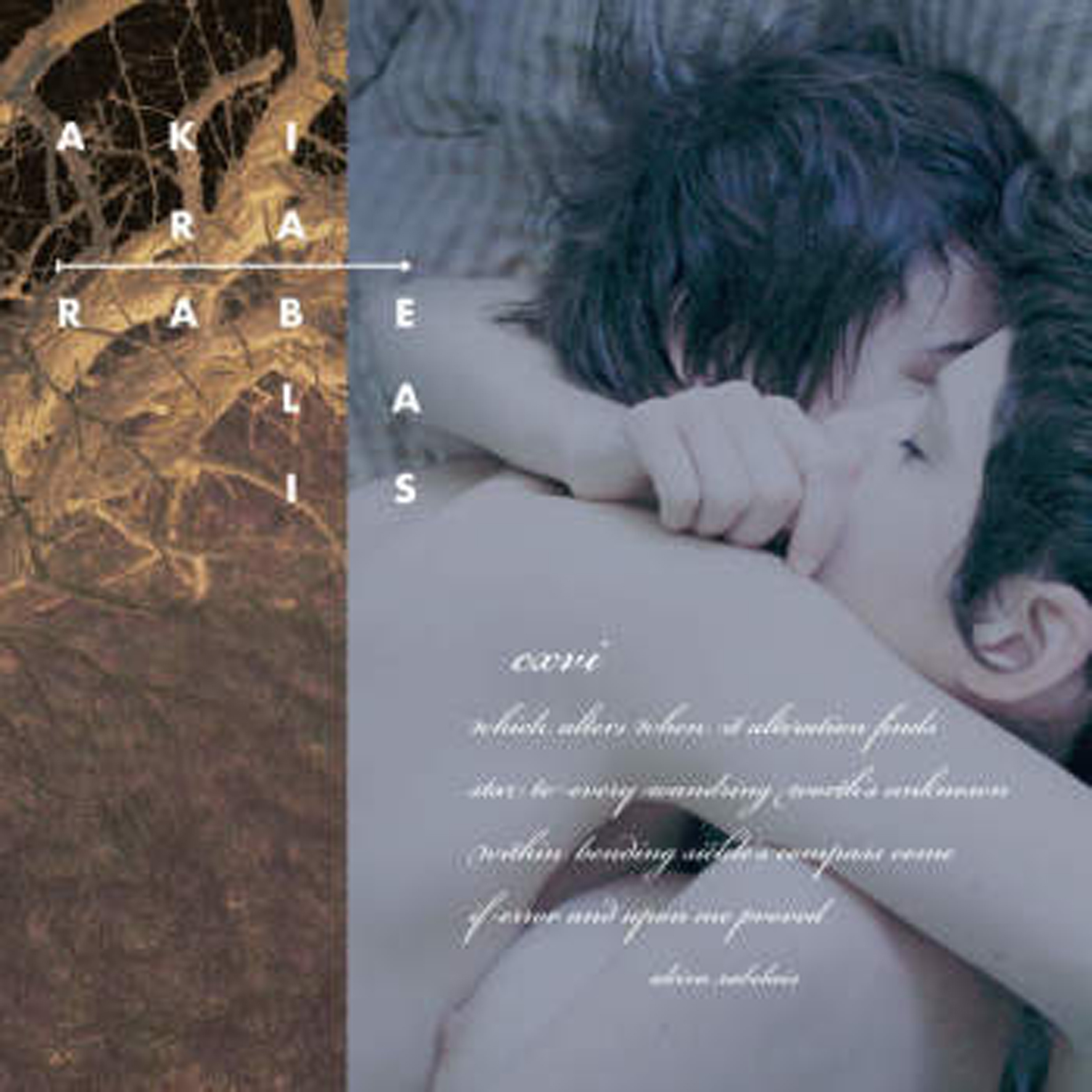 It took me an embarrassingly long time to realize it, but Akira Rabelais has quietly been one of the most unique and intriguing figures in experimental music for the last couple of decades, blurring the lines between collage, modern composition, ambient music, and conceptual art with each release. This latest album has apparently been a labor of love for years, drawing contributions from an eclectic array of collaborators including Harold Budd, Ben Frost, Kassel Jaeger, Stephan Mathieu, Geir Jenssen, and a pair of French photographers. Admittedly, a bevy of talented participants is not always an infallible recipe for a great album, but it was this time, as CXVI resembles a temporally dislocated and hallucinatory mélange of This Mortal Coil, Erik Satie, and a 19th century Parisian opium den.
It took me an embarrassingly long time to realize it, but Akira Rabelais has quietly been one of the most unique and intriguing figures in experimental music for the last couple of decades, blurring the lines between collage, modern composition, ambient music, and conceptual art with each release. This latest album has apparently been a labor of love for years, drawing contributions from an eclectic array of collaborators including Harold Budd, Ben Frost, Kassel Jaeger, Stephan Mathieu, Geir Jenssen, and a pair of French photographers. Admittedly, a bevy of talented participants is not always an infallible recipe for a great album, but it was this time, as CXVI resembles a temporally dislocated and hallucinatory mélange of This Mortal Coil, Erik Satie, and a 19th century Parisian opium den.
The theme of Rabelais's intended magnum opus is unquestionably a Romantic one, as both the album title and the names of the individual songs allude to Shakespeare's 116 sonnet.Clarifying that further, the album's accompanying text is a lengthy etymology of the word "love."That subject has historically been quite fertile ground for inspiration and the four lengthy movements of CXVI appropriately have the scope and feel of a sprawling, immersive epic.The vaporous structure of the album makes it a very elusive and deliciously ungraspable piece of art though.That is especially true of the opening "which alters when it alteration finds," which opens with a gentle, submerged piano motif in a sea of roiling hiss and wobbly distorted tones.Eventually, however, all of the noise abruptly gives way to reveal a simple and tenderly melancholy piano interlude from Budd.As it progresses, however, the spaces between the notes increases and the focus shifts to their lingering, ghostly afterimages.That evanescent and subtly phantasmagoric approach to composition is the one clear thread that runs throughout the entire album, as each piece is roughly twenty minutes long and is defined by a single strong motif that pierces through the languorous haze of spectral abstraction.Those oft-lovely windows of clarity are bridged together by surreal passages of near-silence, murkily faint strings, and frayed, rumbling drones, however, which dissolves any real sense of these songs beginning or ending.Instead, CXVI unfolds like a fever dream that occasionally coheres into passages of vivid, gorgeous lucidity.
As much as I enjoy Harold Budd, the most memorable and striking moments on the album tend to be those involving Rabelais' revolving cast of unusual vocalists.The album's centerpiece is arguably "star to every wandring worth's unknown," in which Mélanie Skriabine sensuously reads Max Ernst's "La Femme 100 têtes" in French over a barely-there haze of shimmering, undulating tones from Rabelais and Kassel Jaeger.Unlike the other pieces on the album, it holds together in a relatively coherent and recognizable structure from start to finish, simply because Skriabine's voice never goes away.Despite that, however, it is probably the most reality-dissolving passage of otherworldly beauty on the album, blurring together floating dissonance, seductive ASMR, and snatches of piano and violin melodies that feel like they are wafting in from fin de siècle Vienna.The following "within bending sickle's compass come," on the other hand, initially resembles a swooningly Romantic and pitch-perfect reincarnation of classic This Mortal Coil (courtesy of Heligoland's Karen Vogt), but that mirage quickly dissipates into an eerily glimmering and ghostly vapor trail of processed guitar.Notably, the piece was originally composed for one of Cedrick Eymenier’s video works, but it feels quite at home here and adds beautifully to album's half-haunted/half-delirious mood.Following a palette-cleansing crescendo of churning, blown-out synth noise, the closing "if error and upon me proved" returns to ASMR territory with a whispered, confessional-sounding monologue from Bogdan Smith.It admittedly creeps dangerously close to sounding exactly like Felicia Atkinson’s recent work, but it is quite an effective and intimate channeling of that aesthetic nonetheless.
The album ends on quite a sublime, enigmatic, and rapturously beautiful note, however, as "an ancient, arcane air inscribed to 78rpm vinyl by Stephan Mathieu" gradually replaces Smith’s voice for a final coda that sounds like a duet between a lovelorn angel and an antique music box.It is a perfect conclusion to a near-perfect album, as my only critique is that Rabelais has an occasional weakness for openly derivative stylistic touches (not unlike David Lynch’s attempt to replicate "Song to the Siren" via Julee Cruise, actually).I genuinely do not mind that particular proclivity in Rabelais' case, however, as he occupies a curious kind of gray area as an artist.In fact, he is kind of analogous to Andy Warhol in a weird way: Warhol's actual skill as a painter was fairly irrelevant, as his true "art" was his overarching vision and his genius for recontextualizing the recognizable.Similarly, Rabelais' talents as a composer are beside the point as well, as his own genius lies in painstakingly threading together all of his various, wide-ranging fascinations (ASMR, Ernst, photography, language, Shakespeare, French accents, the crackle of vinyl, etc.) into bold and coherent new work filled with beauty, mystery, and wonder.Aside from perhaps Spellewauerynsherde, Rabelais has never done that better than he has with CXVI.
Read More
- Administrator
- Albums and Singles
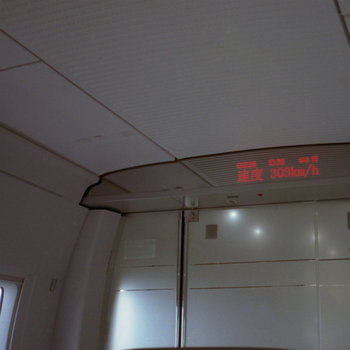
A week before leaving, I bought a dictionary and phrasebook.
Covered in rain, during the days and even the nights, Shanghai was lit in a glow, a mist turning to a constant grey fog. Buildings lined with neon and lcd screens flashed, and from around corners and behind buildings, the night was illuminated much the same as the day. Cars separated the classes, their horns voices punctuating the streets, as pedestrians in groups loosely scattered the streets, talking and walking on speakerphone.
Standing by the metro escalators, there in the square with the overhanging trees of a park, there is construction all around. The buildings seem to be climbing into the darkness at this very moment. Leaving behind and moving forward. We seem to know everything already, our illusion of experience. I imagine taking your hand, I imagined taking your hand, and the lights in the subway flicker as we go deeper. Transit bookmarks each experience, every daydream, and in the end they're interchangeable and indistinguishable between reality and imagination. Try to remember which is real.
To Hangzhou the maglev reached 303 km/h, the towering apartment buildings hunch under construction, passing by in blurs on the flat farmland landscape. I fell asleep, as you were dancing but to no music. The lilies on the lake nodded in the rain, dipping into the water. There was a Wal-Mart near the hotel where I won a pink bunny from a claw machine. I remember the beauty of the architecture of Hangzhou station, birds swirling around the pillars near the top, the echoes of the deep station interior, and the laughing at being lost. There at least we have each other, that memory, or that daydream.
Everything moves faster than we can control. Days are just flashes, moments are mixed up but burned on film, and all of the places and times are out of order. If it could only be us, only ours. If it was ours, if it was us. Sometimes everything goes faster than you can control and you can't stop, much less understand where you are. I bought a dictionary and phrasebook, but "xièxie" (thank you) was the only word I ever got to use.
- Will Long, January 2019
More information can be found here.
Read More
- Administrator
- Albums and Singles
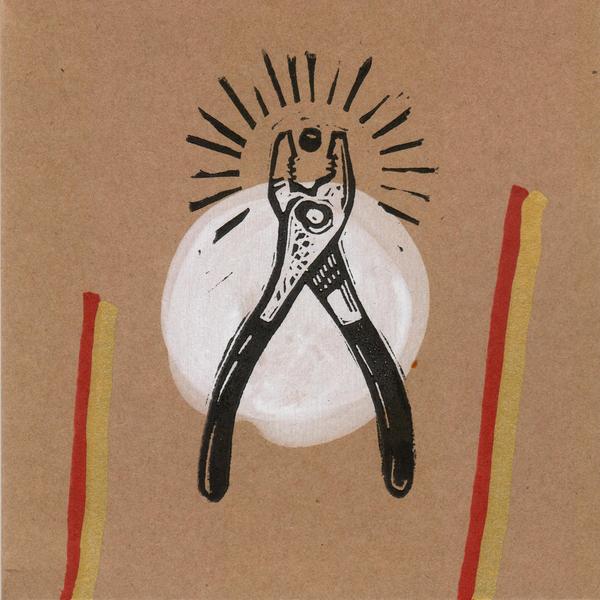
"Hello There!
Some time ago, when I made the decision to disband the most recent line up of Swans, I did so not only with trepidation, but also with a great measure of sadness. This, after all, was the longest lasting grouping of core musicians in the 35 year plus history of Swans, and we made some great work. We were (and remain) friends and collaborated seamlessly as an ensemble. However, a too-comfortable familiarity had taken hold and none of us could see the music surprising us further, so we ditched it, at least for the time being. Following our final performances at Warsaw, in Brooklyn, in November of 2017, after sleeping for what seemed like 6 months, I set about writing new songs for the next version of Swans. I’ve completed about a dozen, and you’ll find 10 of them on the CD we're releasing as a fundraiser to help with the recording and production costs of the new Swans album. These are as close to the bone as it gets – just my acoustic guitar and voice. Should you delve into this collection, you'll discover that the material leans heavily towards words (lots of them) and vocals, which I suppose is a natural inclination after 7 years of immersion in music that was so adamantly geared towards long instrumental passages… Though I’m certain these are fine performances here, these are demos, which means that they are skeletal versions intended as a guide for building the songs with other musicians. And build them (and expand them) I will - presumably to my usual excessive degree, though in this case that proclivity won’t be expressed in a musical style similar to the chapter of Swans that recently concluded. That much I know. Just how things will actually end up sounding is another matter. I have lots of thoughts about how the orchestrations should go, but for now they’re still amorphous, and I’m looking forward to diving in with other musicians in the studio and following where the sound we generate leads. As always, I’ll be looking for the unintended. During a recent phone conversation with my friend Bill Rieflin, I expressed my uncertainty about where this record would lead, especially after 7 years of knowing pretty much in advance the timbre and vocabulary that would be used when we (the recent, past version of Swans) played, and Bill said something I’ll employ as a guide for this new chapter: Follow the uncertainty, make that the thing. A person could do worse than to follow the advice of a supreme musical savant like Mr. Rieflin, so I intend to keep his words in my head as we work. Joining me in this slippery quest will be the following:
The Necks: (Tony Buck, Chris Abrahams, Lloyd Swanton). This transcendental improv combo will play basic tracks to my guitar part on 2 songs, and the songs will be further orchestrated and sung to thereafter. Tony will also play various instruments on other songs.
Kristof Hahn: Stalwart stabber of the sky, recent Swan, and past member of Angels of Light, will play various guitars and lap steel.
Larry Mullins: Stellar past Swans and Angels of Light member, will play drums, orchestral percussion, piano, organ, and whatever else seems appropriate.
Yoyo Röhm: Yoyo is a Berlin bassist and composer/arranger, and he’ll play double bass and electric bass, and will also lend his considerable arrangement skills to the proceedings and will help in gathering orchestral musicians and additional signature players.
Ben Frost: Composer, recording artist, maker-of-sounds and psychic landscapes. I will sit down with Ben once the songs have taken on a shape and I will say OK: What?
Anna von Hausswolff and Maria von Hausswolff: Anna is singer, organist, and composer and her sister Maria is a filmmaker who sometimes sings with Anna. Their voices combine wonderfully. They will sing myriad backing vocals on the record.
Baby Dee: recording artist, chanteuse extraordinaire, harpist and pianist. I wrote a song specifically for Dee to sing, and she has consented generously to come out of retirement to do so. She’ll also sing backing vocals, as will her friends Fay Christen and Ida Albertje Michels.
Jennifer Gira: Sometimes contributor to Swans, professionally arcane. Will contribute backing vocals and critique. She sings the song "The Nub" on the What is This? CD.
Bill Rieflin: Long time honorary Swan and past Angels of Light contributor, currently a member of King Crimson. Bill plays everything. I will sit down with Bill once the songs have taken on a shape and I will say OK: What?
Cassis Staudt: Past member of Angels of Light and passionate accordion pumper, she will play on various songs.
Thor Harris: Robust recent Swan and past Angels of Light superman, recording artist, percussionist, drummer, torturer of homemade instruments. I will sit down with Thor once the songs have taken on a shape and I will say OK: What?
Dana Schechter: Recording artist, past member of Angels of Light, bassist, vocalist, soundscape maker. I will sit down with Dana once the songs have taken on a shape and I will say OK: What?
Heather Trost and Jeremy Barnes: Long time purveyors of exotic Eastern European/Balkan/Turkish homemade hoedowns of psychedelic import as A Hawk and a Hacksaw. They sing and play multiple instruments. I will sit down with them once the songs have taken on a shape and I will say OK: What?
Norman Westberg, Phil Puleo, Christopher Pravdica, Paul Wallfisch: Heroic recent Swans members, ex-Swans, and Swans again forever. I will sit down with them once the songs have taken on a shape and I will say OK: What?
M.Gira will sing and play guitar and produce the record."
More information can be found here.
Read More
- Administrator
- Albums and Singles
"Hello There!
Some time ago, when I made the decision to disband the most recent line up of Swans, I did so not only with trepidation, but also with a great measure of sadness. This, after all, was the longest lasting grouping of core musicians in the 35 year plus history of Swans, and we made some great work. We were (and remain) friends and collaborated seamlessly as an ensemble. However, a too-comfortable familiarity had taken hold and none of us could see the music surprising us further, so we ditched it, at least for the time being. Following our final performances at Warsaw, in Brooklyn, in November of 2017, after sleeping for what seemed like 6 months, I set about writing new songs for the next version of Swans. I’ve completed about a dozen, and you’ll find 10 of them on the CD we're releasing as a fundraiser to help with the recording and production costs of the new Swans album. These are as close to the bone as it gets – just my acoustic guitar and voice. Should you delve into this collection, you'll discover that the material leans heavily towards words (lots of them) and vocals, which I suppose is a natural inclination after 7 years of immersion in music that was so adamantly geared towards long instrumental passages… Though I’m certain these are fine performances here, these are demos, which means that they are skeletal versions intended as a guide for building the songs with other musicians. And build them (and expand them) I will - presumably to my usual excessive degree, though in this case that proclivity won’t be expressed in a musical style similar to the chapter of Swans that recently concluded. That much I know. Just how things will actually end up sounding is another matter. I have lots of thoughts about how the orchestrations should go, but for now they’re still amorphous, and I’m looking forward to diving in with other musicians in the studio and following where the sound we generate leads. As always, I’ll be looking for the unintended. During a recent phone conversation with my friend Bill Rieflin, I expressed my uncertainty about where this record would lead, especially after 7 years of knowing pretty much in advance the timbre and vocabulary that would be used when we (the recent, past version of Swans) played, and Bill said something I’ll employ as a guide for this new chapter: Follow the uncertainty, make that the thing. A person could do worse than to follow the advice of a supreme musical savant like Mr. Rieflin, so I intend to keep his words in my head as we work. Joining me in this slippery quest will be the following:
The Necks: (Tony Buck, Chris Abrahams, Lloyd Swanton). This transcendental improv combo will play basic tracks to my guitar part on 2 songs, and the songs will be further orchestrated and sung to thereafter. Tony will also play various instruments on other songs.
Kristof Hahn: Stalwart stabber of the sky, recent Swan, and past member of Angels of Light, will play various guitars and lap steel.
Larry Mullins: Stellar past Swans and Angels of Light member, will play drums, orchestral percussion, piano, organ, and whatever else seems appropriate.
Yoyo Röhm: Yoyo is a Berlin bassist and composer/arranger, and he’ll play double bass and electric bass, and will also lend his considerable arrangement skills to the proceedings and will help in gathering orchestral musicians and additional signature players.
Ben Frost: Composer, recording artist, maker-of-sounds and psychic landscapes. I will sit down with Ben once the songs have taken on a shape and I will say OK: What?
Anna von Hausswolff and Maria von Hausswolff: Anna is singer, organist, and composer and her sister Maria is a filmmaker who sometimes sings with Anna. Their voices combine wonderfully. They will sing myriad backing vocals on the record.
Baby Dee: recording artist, chanteuse extraordinaire, harpist and pianist. I wrote a song specifically for Dee to sing, and she has consented generously to come out of retirement to do so. She’ll also sing backing vocals, as will her friends Fay Christen and Ida Albertje Michels.
Jennifer Gira: Sometimes contributor to Swans, professionally arcane. Will contribute backing vocals and critique. She sings the song "The Nub" on the What is This? CD.
Bill Rieflin: Long time honorary Swan and past Angels of Light contributor, currently a member of King Crimson. Bill plays everything. I will sit down with Bill once the songs have taken on a shape and I will say OK: What?
Cassis Staudt: Past member of Angels of Light and passionate accordion pumper, she will play on various songs.
Thor Harris: Robust recent Swan and past Angels of Light superman, recording artist, percussionist, drummer, torturer of homemade instruments. I will sit down with Thor once the songs have taken on a shape and I will say OK: What?
Dana Schechter: Recording artist, past member of Angels of Light, bassist, vocalist, soundscape maker. I will sit down with Dana once the songs have taken on a shape and I will say OK: What?
Heather Trost and Jeremy Barnes: Long time purveyors of exotic Eastern European/Balkan/Turkish homemade hoedowns of psychedelic import as A Hawk and a Hacksaw. They sing and play multiple instruments. I will sit down with them once the songs have taken on a shape and I will say OK: What?
Norman Westberg, Phil Puleo, Christopher Pravdica, Paul Wallfisch: Heroic recent Swans members, ex-Swans, and Swans again forever. I will sit down with them once the songs have taken on a shape and I will say OK: What?
M.Gira will sing and play guitar and produce the record."
More information can be found here.
Read More
- Administrator
- Albums and Singles

Anoyo ("the world over there") draws from the same sessions which led to the 2018 work Konoyo, but rendered starker, solemn, and stripped back, with more of a naturalist tint. Hecker's processing here moves in veiled ways, soft refractions and whispered shrouds woven within improvisational sessions of traditional gagaku interplay, evoking a sense of vaulted space, temples at dawn, shredded silk fluttering in the rafters.
This is boldly barren music, skeletal and sculptural, shaped from wood, wind, strings, and mist. Modern yet ancient, delicate and desolate, Anoyo inverts its predecessor to compellingly conjure a parallel world of illusion, solitude, and eternal return.
More information can be found here.
Read More
- Administrator
- Albums and Singles
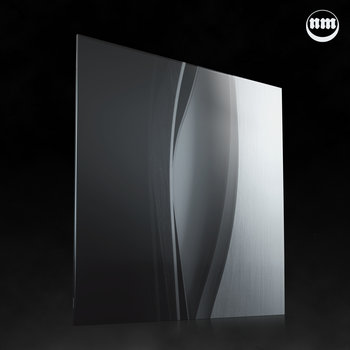
"My Disco finally unveil their debut album for Downwards, a brilliant rendering of concrète/industrial styles recorded in the same Berlin studio often frequented by Einstürzende Neubauten, Pan Sonic and Keiji Haino, somehow channeling the spirit of all three. It's an intensely rich and wildly unexpected trip that takes in the ragged intensity of Suicide alongside gong recordings and a kind of isolationist ambient spirit that resides somewhere between Selected Ambient Works Vol II and Raime.
Environment finds My Disco in the midst of deep synth despair, leaving behind the gnashing guitars in favour of cold metallic percussion and gloomy pads reverberating in derelict, factory-like space. Gutting out the driving, mathy repetition of their prized early work (2010's Steve Albini-produced "Young/You" is a favorite of Karl O’Connor/Regis), the Melbourne-based trio now recall the ungodly offspring of Raime and Swans, operating with an increased appreciation of space, rhythm and tone that will shock even the hardest to please explorers of avant-rock and industrial fault lines.
In no uncertain terms, its 8 tracks plumb the depths of a foul mood, strafing thru a series of antechamber-like stations like some inelegant beast encumbered with clanking manacles and ankle restraints. Thanks to the visceral, vivid nature of the recording and production, the devil lies in the synaesthetic sonic/visual detail, riddling a mostly wordless narrative that perfectly says it without saying it.
Biting down first with the jagged metallic klang and gnawing drones of "An Intimate Conflict," the album continues to fetishize both bleeding-raw and cinematic themes thru the torture chamber ambience of "Exercise In Sacrifice," and the red-lining tone poem "Act," leading into belly of the beast bass growls on "Rival Colour," before the dissonant, keening might of "No Permanence" calves off into a closer to end all closers, with the band's Cornell Wilczek feeding Buchla Easel tones into the empty tank strikes and fetid atmosphere of "Forever" with a febrile effect worthy of Rainforest Spiritual Enslavement.
By any measure, Environment is one of Downwards’ most singular albums, and a must-check for disciples of proper, unheimlich sonics. Trust it’'l wipe that art school smirk right off your mug."
-via Boomkat
More information can be found here and here.
Read More
- Administrator
- Albums and Singles
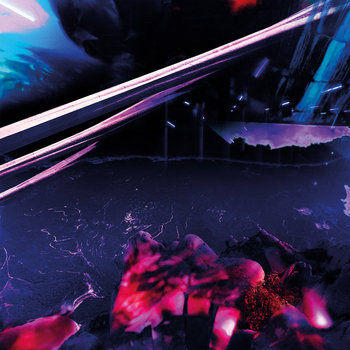
Brace, Brace is Julia Reidy’s soaring Slip return: a dread-tinged incantation unfurling from breath-down-the-neck field recordings, auto-murmured voice, synthetic hum, and irrepressible guitar kinetics.
Reidy's signature 12-string playing - precise, burrowing, rhapsodic - dominates the LP's outer cuts, framing a plaintive electric centre. Blooms of arpeggiations and desolate strums re-inflect slow-moving pitch sequences; the music feels at once on fire and graceful, inevitable.
Perhaps most surprising is how organic Brace, Brace's expanded palette feels. Reidy's electronics are subtly eerie extensions, alien resonances of her playing, both embedding her instrument and making it somehow unreal. This strange smear of body and apparition is neatly nailed in Reidy's sung-to-herself vocals, coaxed out and encroached upon by autotune.
Succeeding issues of her work by Feeding Tube and Room 40's A Guide To Saints, Brace, Brace is a definitive statement from a blazing, restless talent.
More information can be found here.
Read More

